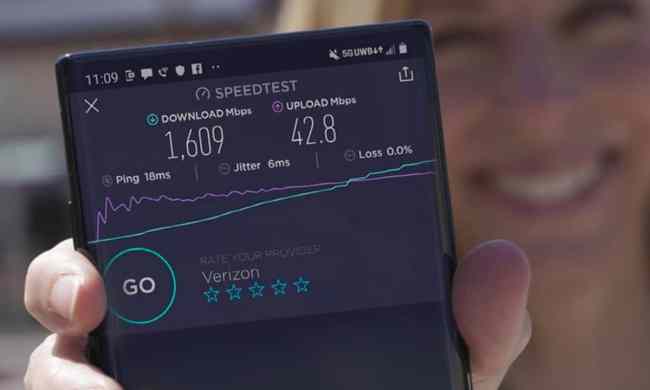When we heard that Fox Sports would be using 5G to broadcast the Big East Basketball Tournament, we figured they meant that they would be testing it out with one replay camera or some other non-essential part of the show. But we were wrong — Fox Sports is transmitting every second of the tournament over 5G.
“The amazing part of 5G is the amount of video data that we’re able to push out on a single cell modem,” says Brad Cheney, vice president of field operations and engineering for Fox Sports. With latency being one-tenth of what it is on regular 4G LTE, 5G enables Fox Sports to send higher-quality video and much more data back to their network centers and into your home. Fans not only will be able to watch games via livestreams, but because of the speeds of 5G, they’ll also be able to do things like choose various camera angles live as the game happens.
This year’s Big East Tournament is taking place at Madison Square Garden in New York City, which already has Verizon’s 5G infrastructure built in. With that infrastructure already in place, fans can count on a “lean-in experience.” Josh Arensberg, head of business development for media and entertainment at Verizon, says, “I think a lot of the industry and consumers … want to be able to drive the camera angles. They want to understand the metrics of what’s happening in the game. That ‘lean-in experience’” that pulls you in and immerses you right into the action. Historically, bandwidth has really struggled to keep up when you send data out of a venue and back to off-site studios and workflows, whether that be in the cloud or at broadcast facilities. With 5G, those days will be behind us.
Fox Sports has partnered with companies like LiveU to implement the technology that makes it possible to bring more content to viewers more quickly using 5G. Janel Fleming, director of sales for LiveU, says the new technology being used to broadcast the tournament “is a bonded cellular portable IP video encoder.” It’s unique in that it bonds multiple network interfaces in order to transport video back to an endpoint, whether that endpoint is a broadcast control room, a living room, or a social media network.
Dan Pisarski, vice president of engineering at LiveU, says, “These are the first units built from the ground up to support 5G.” Typically, the requirements of 5G for things like power consumption, modems, encoders, antennas, RF characteristics, etc., are different than what exist on 4G, but they still have to interact with those older network infrastructures. “So the chance to have these [built-from-scratch] units, designed from day one to be 5G ready on true public 5G networks, is a really exciting opportunity,” Pisarski says.
All this combines to allow Fox Sports to provide more dynamic coverage of the tournament than ever before, and in some cases allows for up to four times the amount of footage to be sent. “We’re able to bring more to the viewers and do more with a single device than we have before,” says Cheney.
“Bringing more to viewers” sort of undersells the idea. Typically, the experience of watching a tournament is exactly the same for everyone except those actually inside the arena: A one-size-fits-all broadcast. With 5G, sports viewing could become a lot more customizable and change the way we watch live events altogether.
“What does it mean to have a fan experience in the venue versus a fan experience outside the venue versus an experience [inside] the home?” asks Arensberg. When networks and broadcasters move into a venue that is 5G enabled and start to look at the expanded capability of services they can offer — not just to the person at home or on a mobile device but also with location-aware content — they can start thinking about how a person is viewing the event based on where they’re viewing it and tailor the content to that experience.
The Big East Basketball Tournament and Madison Square Garden itself are staples in sports history. But just because they’re historic doesn’t mean they have to be stuck in the past. Fox Sports and 5G will make sports history by bringing viewers into the future.


